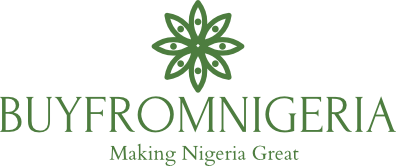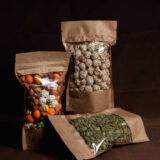Embarking on the venture of exporting sesame paste from Nigeria to foreign industries holds significant profit potential, but success hinges on meticulous planning and execution. In navigating this intricate landscape, it becomes crucial to carefully consider a series of key steps that will not only ensure the quality and appeal of the product but also address the various logistical and market dynamics involved in international trade.
Furthermore, for investors considering this lucrative venture, sourcing the sesame seeds from Gombe State in Nigeria presents a strategic opportunity. Gombe’s conducive agricultural conditions and the established supply chain make it an ideal region to procure high-quality sesame for export. This choice not only aligns with the organic and sustainable practices but also taps into the rich sesame cultivation landscape that Gombe offers, enhancing the overall viability of the investment. In the following guide, we outline essential measures to facilitate a successful and sustainable entry into the global sesame paste market.
Business Setup
A. Registering your business:
- Forming a Limited Liability Company (LLC):
Register your business with the Corporate Affairs Commission (CAC) to operate legally. This establishes your business as a separate entity from your personal finances, limiting your liability in case of legal issues. Prepare necessary documents like company name, directors’ information, and memorandum of association.
- Registering with the Nigerian Export Promotion Council (NEPC):
Registering with the NEPC grants you access to valuable resources and support services for exporters. These include export training programs, market research data, and assistance with finding international buyers. Visit the NEPC website or contact your nearest regional office for registration details.
B. Opening a domiciliary account:
A domiciliary account allows you to receive international payments for your exports in foreign currency. Choose a reputable bank with experience in handling export transactions. Consult with your bank about account fees, required documentation, and minimum deposit requirements.
Market Research
Before diving into production and processing, thorough market research is crucial for launching a successful sesame paste export business from Nigeria. This step involves identifying promising target markets and analyzing the existing competition to set yourself apart.
A. Identifying Target Markets:
Countries with High Demand: Focus on countries with a growing appetite for sesame paste, particularly those seeking healthy and organic food options. Some promising markets include:
- Japan: A leading consumer of sesame products, with a strong preference for organic and high-quality varieties.
- China: With a large and increasingly health-conscious population, China offers significant potential for sesame paste exports.
- Europe: European countries, especially Germany and the Netherlands, have a growing demand for healthy and sustainable food products, presenting an opportunity for Nigerian sesame paste.
- The United States: While not the biggest sesame paste consumer, the US market exhibits rising interest in healthy and ethnic food products.
Trade Agreements and Regulations: Research existing trade agreements between Nigeria and potential target markets. Favorable trade agreements can ease export procedures and reduce tariffs, making your product more competitive.
B. Analyzing Competition:
Research Existing Exporters: Identify both Nigerian and international exporters of sesame paste to understand their strengths, weaknesses, and target markets.
- Major Nigerian exporters include Zaph and Zoe Agro Export Company, Sesame World International, and Green Acres Farm Ltd.
- Global players like Haldiram’s (India), Al Akbar Group (UAE), and Sunfood Superfoods (US) dominate the international market.
Identify Gaps in the Market: Analyze competitor offerings and look for gaps you can fill with your unique product. Consider factors like:
- Organic and sustainable sourcing: Offering certified organic sesame paste can cater to a growing consumer segment.
- Unique flavors and varieties: Explore roasted, flavored, or blended sesame paste options to stand out from the crowd.
- Targeted packaging and branding: Develop branding that resonates with your chosen target market and highlights your product’s unique selling points.
By conducting thorough market research, you can identify the most promising opportunities for your sesame paste export business and develop a strategic plan to enter the market with a competitive edge. Remember, understanding your target markets and tailoring your product accordingly is key to success in the global arena.
III. Product Development:
A. Sourcing High-Quality Sesame Seeds:
Gombe State in Nigeria presents a prime opportunity for investors to source high-quality sesame seeds directly from farmers. Here’s how you can leverage this advantage:
- Partner with local cooperatives: Collaborate with established cooperatives in Gombe State, known for their expertise in growing and processing sesame seeds. This ensures consistent supply, fair prices, and empowers local communities.
- Focus on organic and sustainably grown varieties: Gombe boasts favorable conditions for organic farming, catering to the growing global demand for healthy food products. This can fetch premium prices and differentiate your brand.
- Implement quality control measures: Establish clear quality standards for the seeds and conduct regular inspections throughout the supply chain. This ensures consistent high-grade sesame seeds for your production.
- Invest in sustainable practices: Support sustainable farming practices among Gombe farmers through training and partnerships. This promotes environmental responsibility and strengthens your ethical brand image.
B. Developing a Unique Value Proposition:
Beyond high-quality sourcing, consider these options to stand out in the market:
- Offer diverse sesame paste varieties: Expand beyond plain paste by exploring roasted, flavored, or blended options like tahini or nut butter alternatives. Cater to specific dietary needs and flavor preferences.
- Embrace innovative packaging: Consider sustainable and eye-catching packaging that reflects your brand story and highlights the Nigerian origin of your product.
- Integrate technology: Explore blockchain technology to provide transparent seed provenance and traceability, assuring quality and ethical sourcing to your customers.
By combining Gombe’s high-quality sesame seeds with innovative product development and ethical sourcing practices, you can create a strong value proposition that sets your sesame paste apart in the international market.
Remember, conducting thorough market research and understanding consumer preferences will be crucial in refining your unique selling points.
IV. Production and Processing
A. Complying with Food Safety Standards:
- HACCP and Good Manufacturing Practices (GMP): Establish and implement a Hazard Analysis and Critical Control Points (HACCP) plan based on international food safety standards like Codex Alimentarius. This helps identify and control potential hazards during processing, ensuring the safety and quality of your sesame paste.
- Certification: Pursue relevant certifications like HACCP and ISO 22000 to demonstrate your commitment to food safety and reassure potential buyers. Consult the Nigerian National Agency for Food and Drug Administration and Control (NAFDAC) for specific regulatory requirements for sesame paste exports.
- Hygiene and Sanitation: Implement strict hygiene and sanitation procedures throughout your facility, including cleaning and disinfecting equipment regularly, training personnel on hygiene practices, and maintaining proper waste disposal.
B. Investing in Processing Equipment:
- Cleaning and Dehulling: Invest in equipment for efficiently cleaning and removing the hulls from sesame seeds. Options include vibro cleaners, air separators, and dehulling machines.
- Roasting: Choose appropriate roasting equipment based on your desired finished product and production volume. Options include convection ovens, drum roasters, and infrared roasters.
- Grinding: Select a suitable grinding mill for achieving the desired texture and consistency of your sesame paste. Different mill types include stone mills, colloid mills, and hammer mills.
- Packaging: Invest in high-quality packaging equipment that ensures long shelf life, maintains product integrity, and reflects your brand identity. Consider materials like vacuum-sealed pouches, glass jars, or flexible pouches with resealable closures.
Additional Considerations:
- Storage and Temperature Control: Implement proper storage solutions for raw sesame seeds, roasted seeds, and finished sesame paste to ensure optimal quality and prevent spoilage. Maintain appropriate temperature and humidity levels.
- Traceability and Labeling: Develop a system for tracing raw materials and finished products to guarantee safety and comply with international regulations. Ensure your labels meet international standards, including accurate ingredient lists, nutritional information, and best-before dates.
By carefully planning and investing in production and processing, you can ensure the safety, quality, and consistent taste of your sesame paste, creating a strong foundation for a successful export business.
V. Export and Logistics: Getting Your Sesame Paste to the World

Once you’ve got your top-notch sesame paste production line up and running, it’s time to navigate the exciting world of exporting! This section will guide you through the crucial steps of getting your delicious product from Nigeria to international tables.
A. Finding Reliable Export Partners:
Think of export partners as your trusty guides on the international trade journey. They’ll handle the nitty-gritty of shipping, customs, and documentation, leaving you free to focus on what you do best: making amazing sesame paste. Here are some options to consider:
- Export Management Companies (EMCs): These companies act as your one-stop shop for all things export. They’ll handle everything from finding buyers to arranging transportation and insurance.
- Freight Forwarders: These specialists focus on the physical movement of your goods. They’ll choose the best shipping route, negotiate rates with carriers, and handle customs clearance.
- Trading Houses: These companies buy and sell goods on an international scale. They may be interested in purchasing your sesame paste in bulk and distributing it through their own network.
B. Handling Logistics:
Now, let’s delve into the practicalities of getting your sesame paste across borders:
- Transportation: Choose the most efficient and cost-effective way to ship your product. Airfreight is faster but more expensive, while seafreight is slower but cheaper. Consider factors like the distance to your destination, the shelf life of your product, and your budget.
- Customs Clearance: Each country has its own customs regulations that your shipment must comply with. Work with your export partner to ensure all necessary documentation is in order, such as invoices, packing lists, and certificates of origin.
- Insurance: Protect your valuable cargo against damage or loss with cargo insurance. This will give you peace of mind and financial protection in case of unforeseen circumstances.
C. Documentation:
Exporting involves a fair amount of paperwork, but don’t let it deter you! Here are some key documents you’ll likely need:
- Commercial Invoice: This details the value, quantity, and description of your goods.
- Packing List: This provides an itemized list of everything in your shipment.
- Bill of Lading: This acts as a receipt for your goods and a contract of carriage with the shipping company.
- Certificate of Origin: This certifies that your product was made in Nigeria.
By partnering with reliable export professionals and navigating the logistics and documentation with care, you can ensure your sesame paste embarks on a smooth and successful journey to foreign lands. Remember, good planning and preparation are key to making your export dreams a reality!
I hope this expanded section V gives you a clearer picture of the export process and empowers you to confidently navigate your sesame paste to international markets.
VI. Marketing and Promotion
Building brand awareness and reaching your target audience is crucial for the success of your sesame paste export business. Here’s how to craft a strong marketing and promotion strategy:
A. Developing a Marketing Strategy:
- Identify your target audience: Are you catering to health-conscious consumers, chefs, or food manufacturers? Understanding your buyer personas will guide your marketing efforts.
- Choose the right marketing channels: Utilize a mix of online and offline channels to reach your target audience. This could include:
- Online: Building a website, creating engaging social media content, running targeted online ads, participating in relevant online communities and forums.
- Offline: Attending trade shows and food festivals, collaborating with grocery stores or restaurants, participating in industry events, distributing samples and promotional materials.
- Create compelling content: Share informative and engaging content that showcases the benefits and unique qualities of your sesame paste. Use high-quality visuals like photos and videos to highlight your product’s attractiveness.
- Build brand awareness: Develop a strong brand identity that reflects your values and resonates with your target audience. This includes designing a recognizable logo, using consistent messaging, and creating a memorable brand story.
B. Offering Competitive Pricing:
- Research market trends: Analyze the prices of similar sesame paste products in your target markets. Consider factors like organic certification, packaging types, and brand reputation.
- Set competitive prices: Aim for prices that are attractive to buyers while ensuring your profitability. Remember to factor in production costs, transportation fees, and marketing expenses.
- Offer flexible pricing options: Consider offering bulk discounts or customized quotes for larger orders to attract different types of buyers.
- Promote your pricing strategy: Clearly communicate your pricing on your website, marketing materials, and promotional offers. Be transparent about any additional costs like shipping or taxes.
Conclusion
Gombe state boasts some of the highest quality sesame production in the country. By tapping into this potential and exporting sesame paste, you can not only build a thriving business but also empower local communities and support sustainable farming practices.
This guide has equipped you with the essential steps to launch your sesame paste export journey. From market research and product development to navigating logistics and marketing, each stage holds the key to unlocking success. Remember, thorough planning, unwavering commitment, and a passion for your product are vital ingredients for turning this venture into a rewarding reality.
So, don’t wait! Take the first step today. Research your target markets, source high-quality Gombe sesame seeds, and craft a unique value proposition for your paste. With dedication and the knowledge you’ve gained, you can transform Nigerian sesame into a global delicacy, leaving a lasting mark on the international food scene.
Start your sesame paste export journey now, and savor the sweet taste of success!












